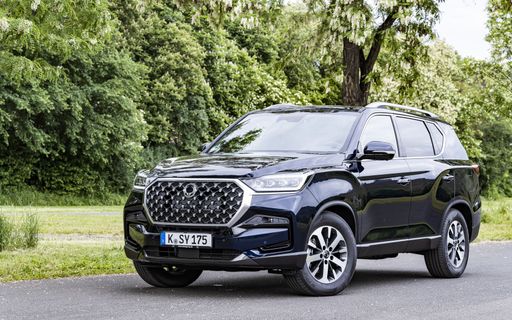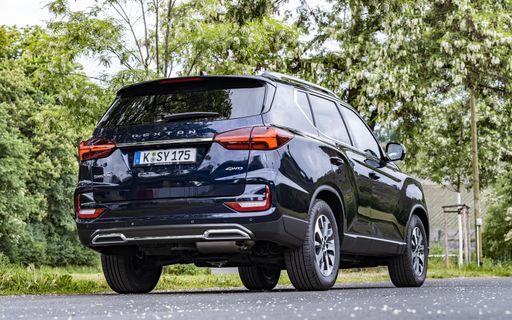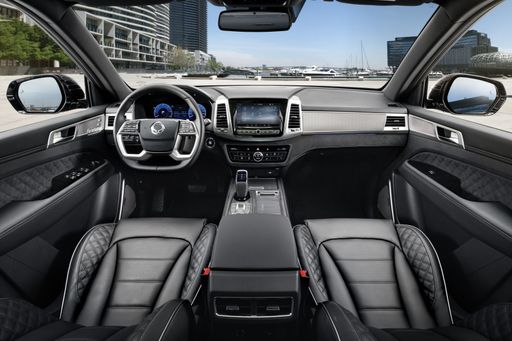SsangYong Rexton vs Toyota Proace Bus – Which car suits you better?
Compare performance, boot capacity, efficiency and price at a glance.
Find out which car is the better choice for you – SsangYong Rexton or Toyota Proace Bus?
Costs and Efficiency:
Price and efficiency are often the first things buyers look at. Here it becomes clear which model has the long-term edge – whether at the pump, the plug, or in purchase price.
Toyota Proace Bus has a distinct advantage in terms of price – it starts at 31600 £, while the SsangYong Rexton costs 41100 £. That’s a price difference of around 9570 £.
Fuel consumption also shows a difference: Toyota Proace Bus manages with 7.30 L and is therefore to a small extent more efficient than the SsangYong Rexton with 8.20 L. The difference is about 0.90 L per 100 km.
Engine and Performance:
Power, torque and acceleration say a lot about how a car feels on the road. This is where you see which model delivers more driving dynamics.
When it comes to engine power, the SsangYong Rexton has a somewhat edge – offering 202 HP compared to 177 HP. That’s roughly 25 HP more horsepower.
In acceleration from 0 to 100 km/h, the SsangYong Rexton is evident quicker – completing the sprint in 10.60 s, while the Toyota Proace Bus takes 13.30 s. That’s about 2.70 s faster.
In terms of top speed, the SsangYong Rexton performs minimal better – reaching 184 km/h, while the Toyota Proace Bus tops out at 170 km/h. The difference is around 14 km/h.
There’s also a difference in torque: SsangYong Rexton pulls hardly perceptible stronger with 441 Nm compared to 400 Nm. That’s about 41 Nm difference.
Space and Everyday Use:
Cabin size, boot volume and payload all play a role in everyday practicality. Here, comfort and flexibility make the difference.
Seats: Toyota Proace Bus offers evident more seating capacity – 9 vs 7.
In curb weight, Toyota Proace Bus is slightly lighter – 1835 kg compared to 2145 kg. The difference is around 310 kg.
In terms of boot space, the SsangYong Rexton offers decisively more room – 784 L compared to 0 L. That’s a difference of about 784 L.
When it comes to payload, Toyota Proace Bus evident takes the win – 1265 kg compared to 770 kg. That’s a difference of about 495 kg.
Who wins the race?
The SsangYong Rexton proves to be offers a more balanced package and therefore becomes our DriveDuel Champion!
SsangYong Rexton is the better all-rounder in this comparison.

SsangYong Rexton
SsangYong Rexton
The SsangYong Rexton stands out in the SUV segment with its robust design and commanding presence on the road. It offers a spacious interior with high-quality materials, providing comfort and practicality for both driver and passengers. The Rexton combines off-road capability with modern technology, making it an attractive option for those seeking a versatile and durable vehicle.
details @ Ssangyong
@ Ssangyong
 @ Ssangyong
@ Ssangyong
 @ Ssangyong
@ Ssangyong
 @ Ssangyong
@ Ssangyong
 @ Ssangyong
@ Ssangyong
Toyota Proace Bus
The Toyota Proace Bus offers a versatile and practical solution for those in need of spacious passenger transport combined with a touch of comfort. Its interior is designed to maximise seating capacity while ensuring that both driver and passengers can enjoy a pleasant journey. With its efficient engine options and reliable build quality, this vehicle remains a popular choice for families and businesses alike.
details

|
|
|
|
|
Costs and Consumption |
|
|---|---|
|
Price
41100 - 51300 £
|
Price
31600 - 61800 £
|
|
Consumption L/100km
8.20 L
|
Consumption L/100km
7.3 - 7.4 L
|
|
Consumption kWh/100km
-
|
Consumption kWh/100km
24.2 - 24.4 kWh
|
|
Electric Range
-
|
Electric Range
218 - 343 km
|
|
Battery Capacity
-
|
Battery Capacity
-
|
|
co2
214 - 216 g/km
|
co2
0 - 193 g/km
|
|
Fuel tank capacity
70 L
|
Fuel tank capacity
69 L
|
Dimensions and Body |
|
|---|---|
|
Body Type
Off-Roader
|
Body Type
Bus
|
|
Seats
5 - 7
|
Seats
5 - 9
|
|
Doors
5
|
Doors
4 - 5
|
|
Curb weight
2145 - 2180 kg
|
Curb weight
1835 - 2140 kg
|
|
Trunk capacity
236 - 784 L
|
Trunk capacity
0 L
|
|
Length
4850 mm
|
Length
4983 - 5333 mm
|
|
Width
1960 mm
|
Width
1920 mm
|
|
Height
1825 mm
|
Height
1890 mm
|
|
Max trunk capacity
1806 - 1977 L
|
Max trunk capacity
-
|
|
Payload
655 - 770 kg
|
Payload
825 - 1265 kg
|
Engine and Performance |
|
|---|---|
|
Engine Type
Diesel
|
Engine Type
Electric, Diesel
|
|
Transmission
Automatic
|
Transmission
Automatic, Manuel
|
|
Transmission Detail
Automatic Gearbox
|
Transmission Detail
Reduction Gearbox, Manual Gearbox, Automatic Gearbox
|
|
Drive Type
All-Wheel Drive
|
Drive Type
Front-Wheel Drive
|
|
Power HP
202 HP
|
Power HP
136 - 177 HP
|
|
Acceleration 0-100km/h
10.60 s
|
Acceleration 0-100km/h
13.30 s
|
|
Max Speed
184 km/h
|
Max Speed
130 - 170 km/h
|
|
Torque
441 Nm
|
Torque
260 - 400 Nm
|
|
Number of Cylinders
4
|
Number of Cylinders
4
|
|
Power kW
148 kW
|
Power kW
100 - 130 kW
|
|
Engine capacity
2157 cm3
|
Engine capacity
1997 cm3
|
General |
|
|---|---|
|
Model Year
2021 - 2023
|
Model Year
2024 - 2025
|
|
CO2 Efficiency Class
G
|
CO2 Efficiency Class
A, G
|
|
Brand
SsangYong
|
Brand
Toyota
|
Is the SsangYong Rexton offered with different drivetrains?
The SsangYong Rexton is available as All-Wheel Drive.
The prices and data displayed are estimates based on German list prices and may vary by country. This information is not legally binding.
